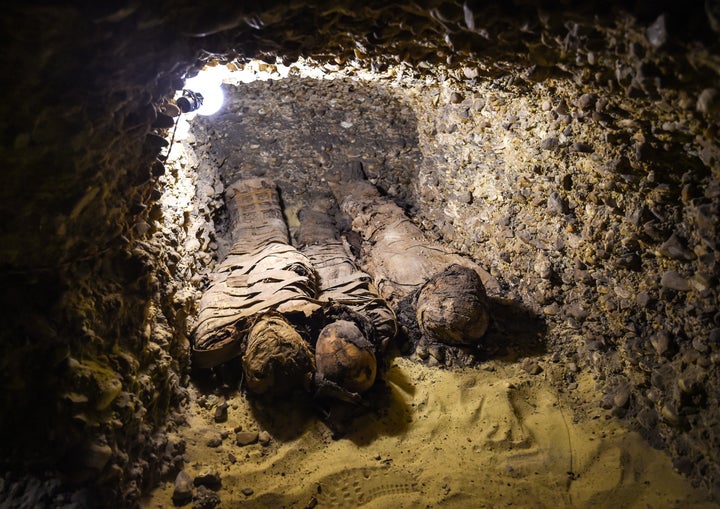
A “maze of tombs” containing dozens of mummies has been unearthed at an ancient burial site in Upper Egypt, officials said.
More than 40 mummies suspected of belonging to an upper-middle-class family were recently found in the Tuna el-Gebel archaeological site in Minya, south of Cairo, Egypt’s Minister of Antiquities Khaled El-Enany said on Saturday.
The family, which included at least 10 children, is believed to have lived during the Ptolemaic, early Roman or Byzantine period, which dates back to 323-30 BC.
“All are in a good conservation condition,” the ministry said in a statement. “Some of them were buried inside stone or wooden sarcophagi while others were buried in sands or on the floors of the tombs or inside niches.”
Pottery and papyri were also found within the chambers.
“Demotic handwriting,” a form of ancient Egyptian script that was used by ordinary people, was also found decorating some of the mummies, The Associated Press reported.

The burial site’s location was first discovered last February by researchers from the ministry and Minya University who “stumbled upon” the graves after finding a hidden corridor, the ministry said.
Tuna el-Gebel was once the necropolis of Egypt’s 15th Nome, or province. It contains an unknown number of tombs, particularly for mummified animals, like ibis and baboons.

During last year’s discovery by the ministry, archaeologists found eight human tombs, including 40 limestone sarcophagi. Prior to this, in 2017, archaeologists at Cairo University unearthed another tomb in Tuna el-Gebel that contained at least 17 mummies, Egypt Today reported.
El-Enany last year said his ministry would continue excavating Tuna el-Gebel for the next five years “in an attempt to uncover all the burials of the cemetery,” according to Newsweek.
Egypt has been working to revive its tourism industry, which took a nosedive following the 2011 revolution.

